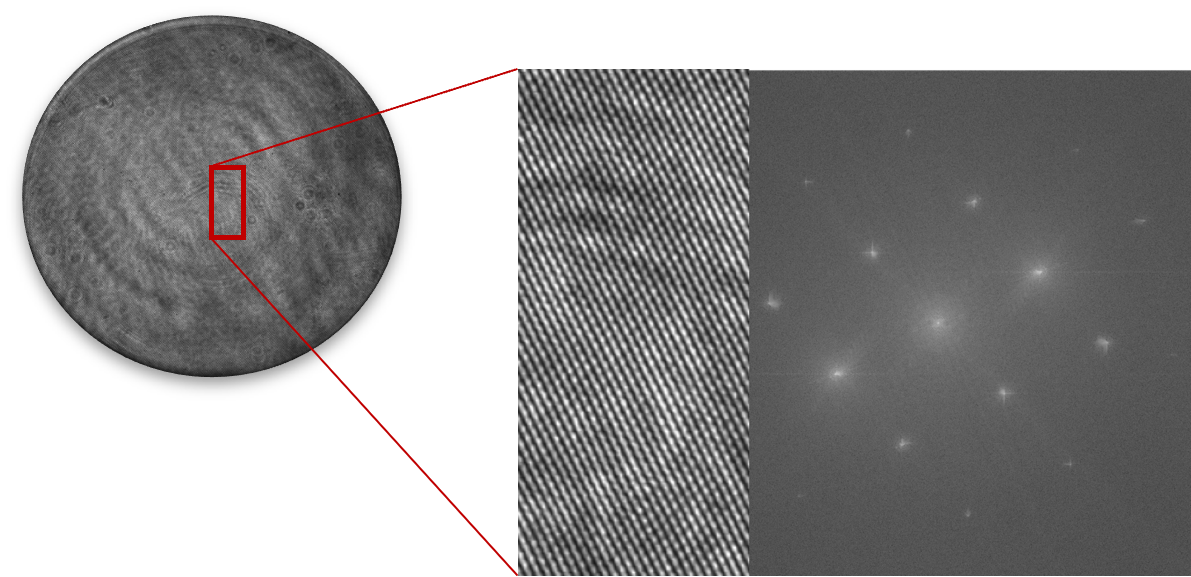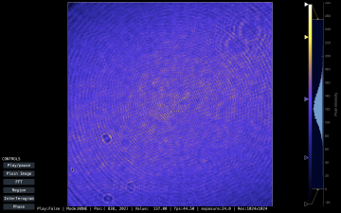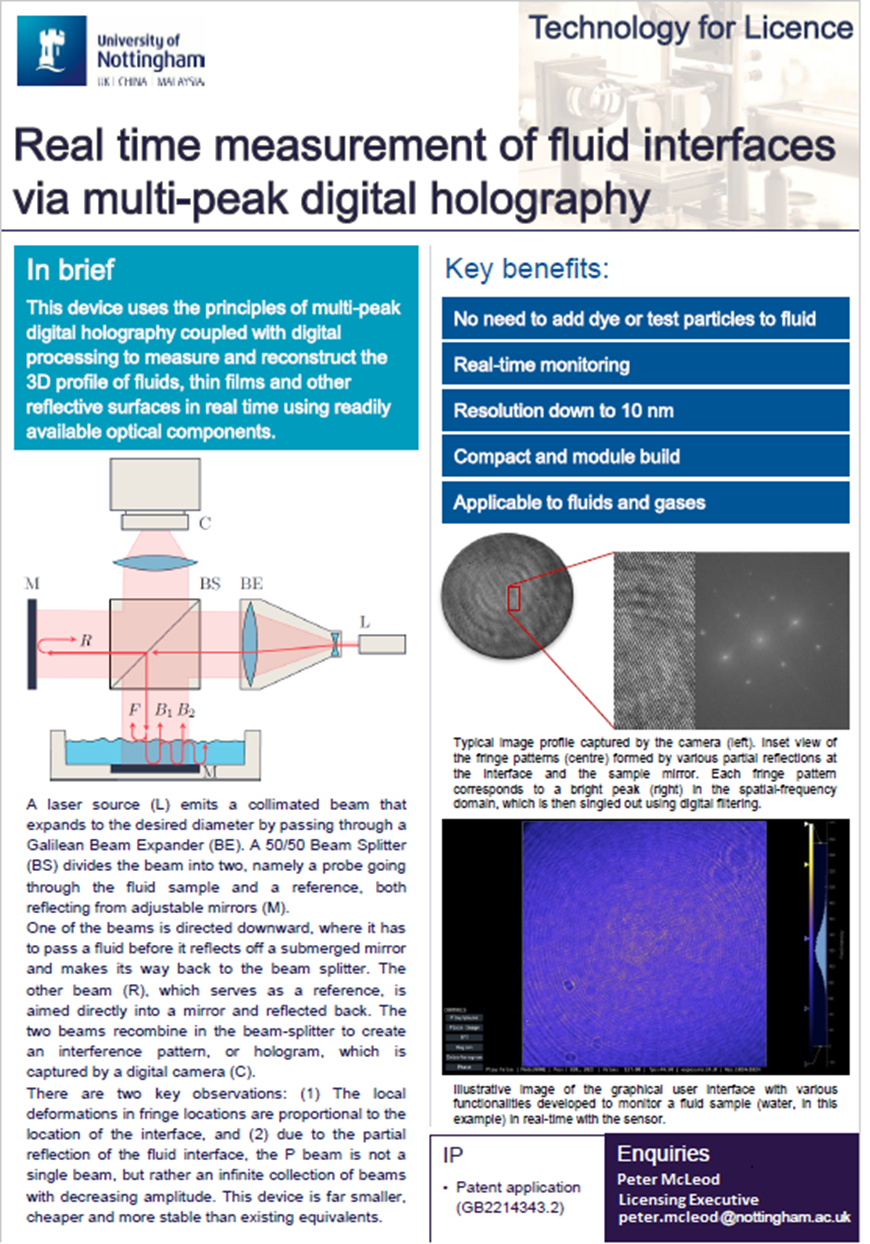Description:
Real time measurement of fluid interfaces via multi-peak digital holography
In brief
This device uses the principles of multi-peak digital holography coupled with digital processing to measure and reconstruct the 3D profile of fluids, thin films and other reflective surfaces in real time using readily available optical components.
Key benefits:
No need to add dye or test particles to fluid
Real-time monitoring
Resolution down to 10 nm
Compact and modular build - uses low-cost optical components
Applicable to all fluids

A laser source (L) emits a collimated beam that expands to the desired diameter by passing through a Galilean Beam Expander (BE). A 50/50 Beam Splitter (BS) divides the beam into two, namely a probe going through the fluid sample and a reference, both reflecting from adjustable mirrors (M).
One of the beams is directed downward, where it has to pass a fluid before it reflects off a submerged mirror and makes its way back to the beam splitter. The other beam (R), which serves as a reference, is aimed directly into a mirror and reflected back. The two beams recombine in the beam-splitter to create an interference pattern, or hologram, which is captured by a digital camera (C).
There are two key observations: (1) The local deformations in fringe locations are proportional to the location of the interface, and (2) due to the partial reflection of the fluid interface, the P beam is not a single beam, but rather an infinite collection of beams with decreasing amplitude. This device is far smaller, cheaper and more stable than existing equivalents.
We have a patent pending (Application No. 2214343.2) and are looking to commercialise the technology by licensing to an industrial partner.
Further reading: Vitor S. Barroso, August Geelmuyden, Sreelekshmi C. Ajithkumar, Anthony J. Kent, and Silke Weinfurtner, "Multiplexed digital holography for fluid surface profilometry," Appl. Opt. 62, 7175-7184 (2023). doi: 10.1364/AO.496937
Intellectual Property:
- Patent application (GB2214343.2)
- Copyright in algorithm code
 Typical image profile captured by the camera (left). Inset view of the fringe patterns (centre) formed by various partial reflections at the interface and the sample mirror. Each fringe pattern corresponds to a bright peak (right) in the spatial-frequency domain, which is then singled out using digital filtering.
Typical image profile captured by the camera (left). Inset view of the fringe patterns (centre) formed by various partial reflections at the interface and the sample mirror. Each fringe pattern corresponds to a bright peak (right) in the spatial-frequency domain, which is then singled out using digital filtering.
 Illustrative image of the graphical user interface with various functionalities developed to monitor a fluid sample (water, in this example) in real-time with the sensor.
Illustrative image of the graphical user interface with various functionalities developed to monitor a fluid sample (water, in this example) in real-time with the sensor.
Enquiries:
Peter McLeod - Licensing Executive
peter.mcleod@nottingham.ac.uk

Download pdf